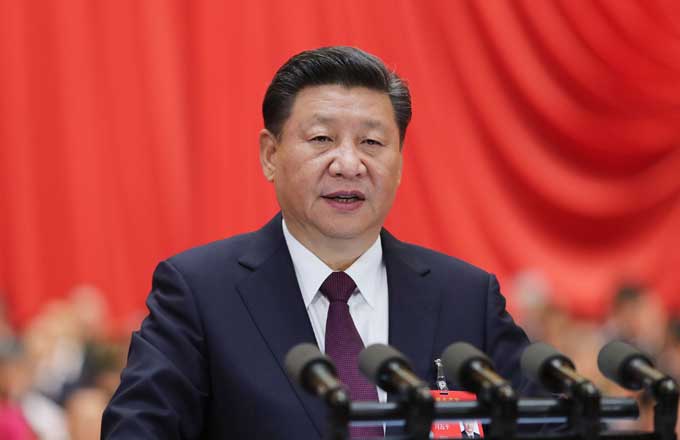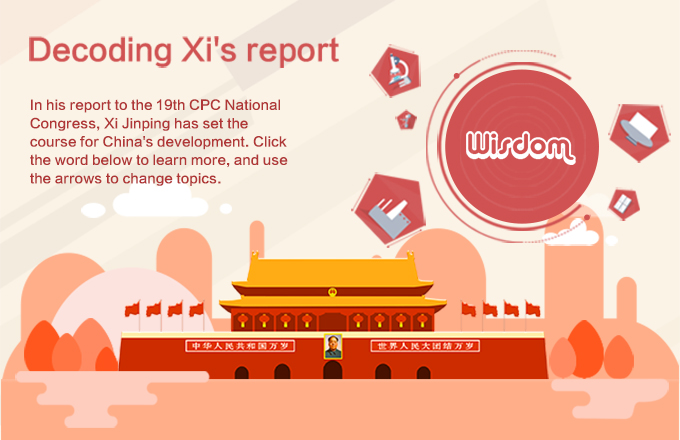VOC - the initials that are cause for concern
 |
But experts say another group of organic chemicals - volatile organic compounds that can be even more disruptive - are also hidden in the smog. These are the next pollutants targeted in the government cleanup.
Shortened to VOC, total emissions from this group of chemicals are among the preconditions determining whether a construction project can pass its environmental impact assessment for the first time.
This is according to the Airborne Pollution Prevention and Control Action Plan (2013-17) unveiled by the central government on Sept 12.
Beijing went even further than other cities, by including VOCs for the first time in its emission control targets for 2013.
The municipal government also decided to start collecting VOC emission fees from 2014. By 2017, VOCs emitted by the city's major industries should be halved, based on the 2012 level, as required by the city's Clear Air Action Plan (2013-17) released on Sept 2.
Many people are not as familiar with the term VOC as they are with PM2.5 - particulate matter smaller than 2.5 microns in diameter that can penetrate the lungs - or sulfur dioxide and nitrogen oxides.
VOCs are a variety of chemicals emitted as gases from certain solids or liquids, some of which may have short- and long-term adverse health effects, according to the definition given by the United States Environmental Protection Agency.
Fastest growth
They have both human and natural sources. Many from the human, or anthropogenic, sources are produced in the manufacture of paint, adhesives, petroleum products, pharmaceuticals and refrigerants.
Experts say the hazards posed to human health cannot be ignored. These include irritating the skin and mucose membrane and being carcinogenic, teratogenic (where an agent, as a chemical or disease, causes malformation of a fetus) and mutagenic (where agents are capable of noticeably increasing the frequency of mutation).
Most VOCs can react with nitrogen oxides under strong sunshine, forming ozone in the air close to the ground.
Some may even become precursors of PM2.5, leading to the formation of smog and haze, said Feng Bo, a division chief from the Environmental Protection Ministry's science, technology and standards department.
China now has the world's fastest growth in emissions of several airborne pollutants, including VOCs, nitrogen oxides and ozone, said Chai Fahe, vice-president of the Chinese Research Academy of Environmental Sciences.
According to Zhao Hualin, head of the ministry's pollution prevention and control department, VOC emissions match those of sulfur dioxide or nitrogen oxides, yet the risks from VOCs are much more severe. Zhao was speaking at a forum on environmental policies and development of the environmental service industry, held in Beijing in late July.
Wang Yuesi, a researcher at the Institute of Atmospheric Physics under the Chinese Academy of Sciences, told Beijing News that about 30 percent to 40 percent of the VOCs in Beijing's air are chemicals with ring structures resembling those of benzene, which may lead to diseases such as leukemia.
Some VOCs may cause chronic, long-term and irreversible damage to the body, Wang said.
Control targets
However, despite these risks, China did not make an early start on attending to, and controlling, VOCs.
They were not listed in central government documents as key airborne pollutants, together with sulfur dioxide, nitrogen oxides and particulate matter, until 2010.
Official VOC prevention and control targets were only released two years later, when the Airborne Pollution Prevention and Control Plan for Key Regions (2011-15) was unveiled by the Environmental Protection Ministry in October 2012.
Under the plan, comprehensive VOC prevention and control will not begin until 2015.
However, the original plan has been accelerated significantly, as shown in both national and regional air pollution control plans for Beijing between 2013 and 2017. Both plans were released in September.
Under the new plans, a lot of work on VOC investigation and control will start this year, rather than having to wait until 2015.
"If we hope to see real changes to the country's air quality, coordinated control of multiple pollutants, including VOCs, is a must," Yang Jintian, head of the Atmospheric Environment Institute at the Chinese Academy for Environmental Planning, told China Daily.
"There has been no official data on the annual VOC emission level in China. The estimated figure is 25 million metric tons," Yang said. "Our first step should be to find the exact number, before trying to keep emissions under control."
The capital's environmental protection system will be able to monitor and calculate VOC emissions by 2015, according to Beijing's Clear Air Action Plan (2013-17).
But when compared with traditional pollutants such as sulfur dioxide and nitrogen oxides, VOC control measures remain weak.
There is a lack of emission standards, there being no specific requirements for the control of VOCs in the Atmospheric Pollution Prevention Act, which took effect in 2000.
The law has only included regulations on organic hydrocarbon exhaust emissions, gases with an offensive smell, toxic and harmful gases, and cooking oil fumes, rather than there being a comprehensive regulation on VOCs, which contain all the gases above and many more, according to the VOC Prevention and Control Techniques and Policies. This study, led by the China Association of Environmental Protection Industry, was released in August 2012.
Major difficulties
The study found there have been no national-level clean production standards dedicated to the control of VOCs for most industries that emit these compounds, including the organic chemistry industry and the printing industry.
"We are faced with two major difficulties. One is the relatively weak VOC scientific research and the other is the vast number of VOC sources, which pose great barriers to the monitoring work," said Zhao Yingmin, head of the Environmental Protection Ministry's science, technology and standards department.
Zhao made the comments at an environmental industry forum held in Yixing, Jiangsu province, in late July.
Strict and detailed permission for VOC emissions is an important management measure in developed countries, Zhao Yingmin said, adding that a factory he used to visit in the United States has 158 different types of VOC emission permission, ensuing that such emissions from each valve in the factory are well under control.
Zhao Hualin, from the ministry's pollution prevention and control department, said it is vital to legislate to set up a rational punishment system to regulate illegal VOC emissions.
"Sometimes, although we can't directly see VOCs being emitted in our factories, we may know that every valve is leaking when setting up infrared instruments there," Zhao Hualin said. "The fine for VOC leakage in the US can be as high as $7 million, while in China it is no more than 200,000 yuan ($32,685)."
He said experience overseas also shows that the market can play an important role in VOC prevention and control.
Some countries impose heavy fines on enterprises that produce products, such as hair spray, with VOC content exceeding relevant standards, or raise tax for producers and users of products with a high VOC content, Zhao Hualin said.
Jiang Xueqing and Yang Yang contributed to this story.
Registration Number: 130349























